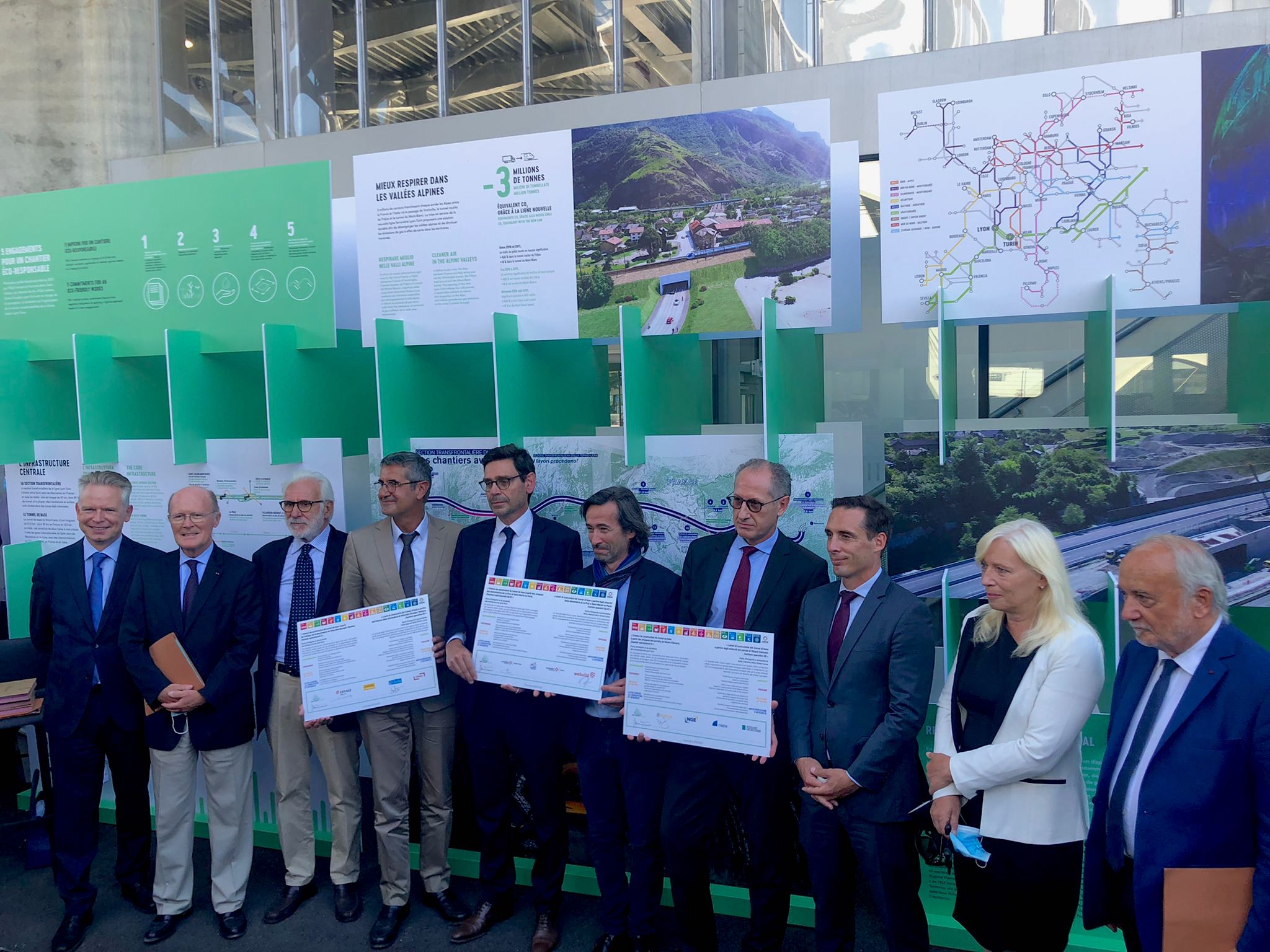The official TELT website has changed: from August 2022, telt-sas.com becomes telt.eu. If you have any problems or need help, please contact us.
The official TELT website has changed: from August 2022, telt-sas.com becomes telt.eu. If you have any problems or need help, please contact us.
The Fréjus tunnel is the oldest railway tunnel in Europe, and it is still used today by trains running between Italy and France. However, the competitivity and safety of this infrastructure, compared to the highway, has gradually decreased; in fact, the average daily capacity of the tunnel is only 60 trains per day.

The 13.7 km tunnel was envisioned by Cavour and inaugurated in 1871. The historic tunnel was built by 4,000 workers using pneumatic drills and technologies developed for the occasion, which enabled it to be built in less than 14 years, compared to the 40 needed with traditional excavation methods.
The new tunnel is being built 800 metres lower, to enable trains to travel at the same altitude as the plain. The average daily capacity of the Fréjus railway tunnel is just 60 trains per day. This figure was confirmed by SNCF Réseau, in reply to an inquiry from the president of the Comité pour la Transalpine Jacques Gounon. A figure very far-removed from the 162 freight trains that will be able to pass daily in the new Mont Cenis base tunnel, transferring the equivalent of 1 million heavy goods vehicles per annum onto the railway system.


The project is strongly supported by the European Union and it is based on four international Treaties between Italy and France stipulated in 1996, 2001, 2012 and 2015 (modified in 2016). Between the end of 2016 and the beginning of 2017, the Italian and French Parliaments have ratified the agreement that starts the definitive work.
The current configuration of the cross-border section in Italy is the result of participatory planning with the involvement of local authorities. In Italy in particular, the final route, one that is radically different from the original project, was agreed on thanks to the work of the Observatory on the Turin-Lyon line chaired by the Government Commissioner, at the end of 205 work sessions and 300 audiences with technicians and experts. The definitive route of the Turin-Lyon cross-border section will allow a 40% saving in energy, thanks to the easing of the gradient and the doubling of the load capacity, making rail transport competitive compared to road transport, with considerable resulting economic and environmental benefits.
In France, a Public Inquiry was held, coordinated by an independent commission, before the go-ahead for the work, which expressed itself both with regard to the benefits in realising the work and on the project itself. This procedure applies to all major public works and it involves all the interested parties (proponents, committees, citizens, experts and all those who wish to participate). In the case of the Lyon-Turin line, it ended with a favourable opinion.
The economic trade between Italy and France is worth over 85 billion euros (2019 figures) while, if we consider the volume between Italy and the Western European quadrant as a whole, it rises to about 150 billion euros.
This trade rises still more to 204 billion if we consider also the other countries that could potentially gravitate around the Turin-Lyon line (Portugal, Belgium and the Netherlands). In addition, over 44 million tons of freight circulates along the Italy-France axis. Of this traffic, over 90% travels by road, compared to 70% in Austria and 30% in Switzerland.
By continuing to use the site, you agree to the use of cookies | Continuando ad utilizzare il sito, accetti l'uso di cookie | En continuant à utiliser le site, vous acceptez l'utilisation de cookies | PLUS
The cookie settings on this website are set to "allow cookies" to give you the best browsing experience possible. If you continue to use this website without changing your cookie settings or you click "Accept" below then you are consenting to this.